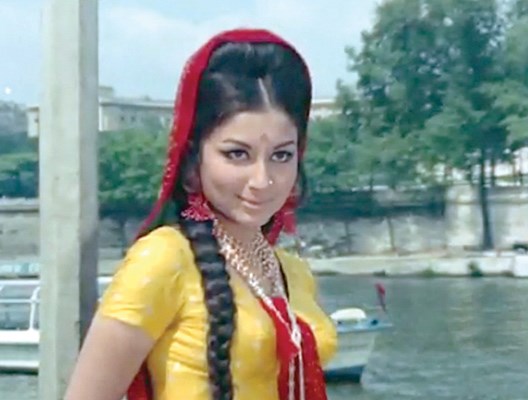- Life in the Limelight: Sharmila Tagore & Five Decades of Indian Cinema at Westminster Savings Theatre, SFU Surrey, Central City, 13450 102 Ave, Surrey. Tonight at 7 p.m. Tickets: $50 /$100 (premium seating) includes post-talk cocktail reception. For more information visit indiansummerfestival.ca.
INDIAN film actress Sharmila Tagore, a member of the highly influential Bengali Tagore family, began acting in movies at the age of 13 when director Satyajit Ray chose her to play one of the leads in his 1959 classic Apur Sansar (The World of Apu).
She went on to work with Ray on several other projects and also established herself as a major Bollywood star. She spoke to the North Shore News about her five-decade long career prior to her appearance tonight at the Indian Summer Festival.
North Shore News: What was it like growing up in the Tagore family?
Sharmila Tagore: I had a normal life with school, many relatives and the usual mischief that we get in to when we are kids. The arts was always a backdrop and influence in our lives, with music and dance very much a part of our upbringing.
North Shore News: You started very young working with Satyajit Ray. It must have been very unusual circumstances for a 13-year-old girl to be chosen for the lead in Apur Sansar. How were you selected for the role?
Sharmila Tagore: In spite of advertisements in the local newspaper and over a 1,000 responses that Ray had received, he was not satisfied with any of the entries. A mutual family friend suggested my name as he had seen me in a dance recital. Ray saw me and was sold. Bijoya, Ray's wife was absolutely not convinced, but Ray asked her to just ignore everything and look at my eyes. For the screen-test Bijoya pulled my hair back, tied it into a tight knot and made me wear a simple cotton sari - and Aparna was born.
North Shore News: You worked on several films with him over the years. What was a Ray set like?
Sharmila Tagore: There is perhaps no filmmaker who exercised such total control over his work as Satyajit Ray. He was responsible for scripting, casting, directing, scoring, operating the camera, working closely on art direction and editing, even designing his own credit titles and publicity material. His films come as close to complete personal expression as may be possible in cinema. Ray's style grows out of the material itself and from an inner compulsion to express it clearly. Although Ray continued to experiment with subject matter and style more than most directors, he always held true to his original conviction that the finest cinema uses strong, simple themes containing hundreds of little, apparently irrelevant details, which only help to intensify the illusion of actuality better.
North Shore News: What was Bollywood like when you first started working as an actress? What was the studio environment like? Were there any directors or actors who were particularly significant in your career?
Sharmila Tagore: It was a simpler time and a lot of the relationships with co-actors and directors became almost family like. There were the occasional star tantrums but that was not really the norm. I could not really pick a favourite though it is evident from the number of films I have done with Rajesh Khanna, Shashi Kappor and Dharmendra, for example, and Gulzar Saab and Shakti Ji, that we share a very comfortable equation.
North Shore News: What was it like working with Shakti Samanta, Shammi Kapoor and Rajesh Khanna?
Sharmila Tagore: Every film finds new challanges and every role requires a different equation. As a star you tend to find spaces where you can find a comfort zone and my co-actors were always very supportive and we enjoyed great working relationships.
North Shore News: Bollywood has a well established star system. Were there lots of demands made on the film stars? What was that like for you?
Sharmila Tagore: The star system is more of a present-day media phenomenon. In our time there was healthy competition but also respect for each other's work. There wasn't that much pressure as we worked on single films and also the shifts were more manageable. It was really up to the actor to choose the sort of work pressure he/she wanted! Being a star meant you did live a life somewhat different but that was the challange of the profession.
North Shore News: How has Bollywood evolved over the years? Sharmila Tagore: It's a professionally-run, thriving industry creating a heady mix of quality entertainment. The new breed of directors and producers are a diverse lot producing intelligent and funny, comic and tragic fare for the movie goer. It's an exciting time for Indian cinema with the infusion of corporate money into the industry which allows for experimentation on different levels so you have the purely commercial Dabbang alongside an equally successful Vicky Donor which is quirky and bold in terms of its subject - sperm donation.



